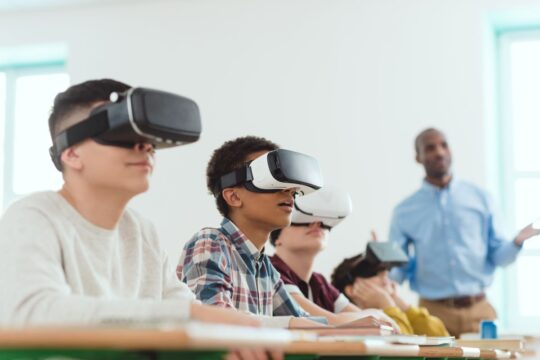Classrooms today are heavily reliant on technology. From Chromebooks and iPads to interactive whiteboards, technology has become a part of everyday teaching and learning. As classrooms become more and more dependent on devices, the question many are asking is whether the shift is equitable for all students.
Equity in a tech-driven classroom isn’t just about making sure that every child has a laptop; it’s ensuring that all students, regardless of their race, gender, ability, or circumstance, have access to technology. It also means being aware of the challenges that come with digital tools and finding ways to tackle those challenges.
Here are some key areas to focus on when creating a tech-driven classroom that supports all learners.
Addressing the Digital Divide
When you hear the term “digital divide,” you’re probably thinking about students who have access to technology and those who don’t. While this is mostly true, it’s actually a bit more complicated than that. A student may have a school-issued device, but may lack the internet, or some students may share a computer with their siblings or not have a quiet place to use it. The divide isn’t just about having the technology; it’s about whether the student can use it in a meaningful way to learn.
To address these challenges, school districts can partner with local internet providers to offer low-cost or even free internet services. Keep school libraries or student services open later to help students who need access to the internet. Or allow students to utilize WIFI hotspots on their school-issued devices.
To truly address the gap, consider sending out a survey to parents to find out what technology and internet services their child has access to. This can help you identify families that need extra support.
Training for Both Students and Teachers
It’s easy to assume that today’s students know how to use all digital devices and online tools. However, while most students are comfortable navigating social media, they may need more support with digital literacy and evaluating and formatting resources.
Teachers also may feel confident with some programs or trying new platforms, but others may need more support. Providing professional development that is specific to classroom needs, as well as giving teachers time to practice, is essential.
When both students and teachers receive training, technology becomes less of a challenge and more of a tool to support learning.
Meeting Diverse Learning Needs
One of the greatest uses of technology in the classroom is that it can support different learning styles and abilities. With the right digital tool, technology can meet the needs of all students. For example, students struggling with reading can use the Natural Reader tool that turns text to audio, while visual learners can use the Canva app to help organize and present information.
English Language Learners can be supported through apps like Google Translate, while students who learn better through hands-on learning can utilize apps like Kahoot. Technology can be a powerful tool that can help every student learn in a way that is best for them.
Watching Out for Algorithmic Bias
Many of the digital tools schools use rely on algorithms. These are systems that decide on what content a student sees or how their work is scored. While it’s a great time-saver for teachers, it can also create problems.
For example, predictive text may not recognize certain names or phrases, which can leave some students feeling left out, or some programs may grade one student more harshly than another based on a certain preferred writing style. Even some facial recognition software used for student attendance or security has been shown to be biased against darker skin tones.
This is why it’s so important not to solely rely on technology for all decision-making regarding students. Educators need to look closely at how these programs affect students and use the data along with their own personal judgment.
Ensuring All Students are Heard
One of the great things about technology is that it gives all students a platform to be heard. In traditional classrooms, students raise their hands when they have something to say, and the teacher takes turns allowing students to talk. Technology changes that. Collaborative tools like Google Docs make it easy for all students to contribute.
Podcasts and videos allow students to share their voices in creative ways that teachers would never see if they were to just raise their hands or write it down. When tools like these are intentionally used, they do more than just increase participation; they give students a voice and allow everyone to be part of the conversation.
Practical Steps for Teachers
Making technology work for every student can be a challenge, so here are a few practical steps that can help make a difference.
Review Student Resources
Survey students and parents to see what technology resources are accessible at home. Once you know the situation, you can connect families to after-school lab hours or internet hotspots.
Offer Student Choice
Not all students learn the same way. Offer students choices on how they learn best, using different formats, such as creating videos, using apps, etc. This flexibility levels the playing field for students.
Rotate Tools
Offer students different tools and platforms throughout the year so they can see what works best for their specific learning style.
Check for Bias
Think critically about the tools that you use and ask yourself if the program works well for all groups of students. Use the data from your apps as well as your own observations.
Encourage Student Feedback
Ask students for feedback on the tech they are using. Use this information to help guide your choices and adapt your instruction to meet the needs of all students.
Prioritize Balance
Equity means using technology in a meaningful way. Pair technology with offline activities to give all students the chance to shine.
Equity in a tech-driven classroom is not just about ensuring all students have access to technology, but also can use these tools in a way that supports learning. It’s about making sure that all students can thrive in a digital world.




